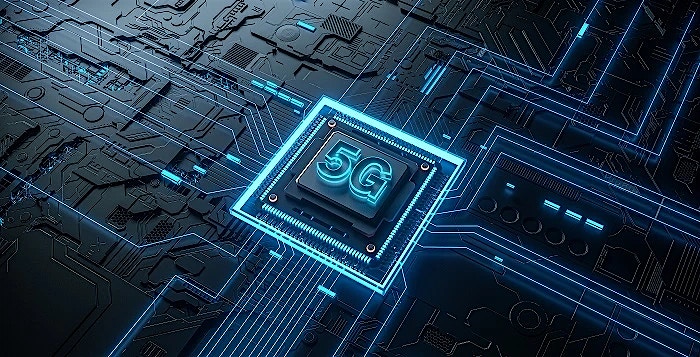India, in the last few decades, has made significant strides in technology integration and its digital economy. From 5G, the adoption of digital payments to the development of cutting-edge AI capabilities and smartphone penetration, India has experienced enormous technological transformation. Despite global economic headwinds, rising inflation and interest rates, the country’s current digital transformation (DX) adoption landscape has been rapidly evolving with DX spending projected to scale to USD $23.6 billion in 2025.
According to Deloitte TMT (Technology, Media, and Entertainment, Telecom) 2023, India is set to emerge as a major player in the 5G revolution, semiconductor and chip technology, live sports and AVOD (advertising video on demand) options with private deployment networks likely to accelerate during the 2025-2028 period. The Indian semiconductor market may reach $55 billion by 2026 with more than 60% of the market being driven by three industries—smartphones and wearables, automotive components and computing and data storage.
"With growing demand, the industry is poised to play an important role in enhancing the global value chain as it will expand to a market size of $85 billion and generate employability for 6,00,000 people by 2030," the report says.
5G to contribute $450 bn to India’s economy by 2040
The 5G standalone networks can transform enterprise connectivity in India. The economic impact of 5G could potentially reach $450 billion by 2040, owning to cross-sector contributions for productivity and efficiency gains through 5G use case deployment across industries, the report revealed.
“As the 5G private network ecosystem continues to evolve, stakeholders need to collaborate and create India-centric use cases that demonstrate the technology’s impact across industry verticals. The potential benefits of 5G private networks in sectors, such as manufacturing, retail, agriculture, transportation, and health care cannot be ignored. It is time for Indian enterprises to explore the possibilities and take a leap in their digital transformation journey,” said Peeyush Vaish, Partner and Telecom Sector Leader, Deloitte India.
The Telecom Regulatory Authority of India (Trai) has recommended carving out 40 MHz blocks in the 3700-3800 MHz and 4800-4990 MHz bands for captive non-public networks (CNPN) or private networks. The reserve price estimation and formalization of methods for spectrum allocation for CNPN is also underway. Tech giants in India are already investing in building the 5G ecosystem to help enterprises transform their strategies and business growth.
In the recently concluded Mobile World Congress 2023, Kalyan Kumar, Global CTO at HCL Tech explained to CNBC-TV18: “HCLTech is not looking to acquire spectrum in India but to partner with telecom operators to deliver solutions for helping enterprises and customers adopt 5G at scale. HCLTech and its software division—HCLSoftware—demonstrated technologies that leverage deep domain expertise across engineering, digital, cloud and software to ‘Supercharge 5G and beyond’.”
The company recently launched two new tech services for 5G ecosystem, the 5G system integration framework (5G SF) and CloudSMART Modernization Experience and Site Reliability Engineering (SRE).
“Communication service providers and enterprises need a system integration partner that can scale in diverse technology domains to integrate, deploy and operate 5G networks. With our 5G system integration framework, we have created a differentiated set of services to address the unique system integration requirements for disaggregated and distributed network domains that include RAN, transport and core,” said Vijay Guntur, President and Head, Engineering and R&D Services, HCLTech.
The Indian sports market is estimated to touch $100 billion
The Indian sports market is estimated to touch $100 billion by 2027 from $27 billion in 2020, a growth of over 20%, and "about twice as fast as the global sports market," Deloitte's analysis also revealed.
While OTT, gaming and sports industries are typically the center of discussion on 5G, digital advertising is another front that will gain tremendously from the next-generation network. Digital advertisements will account for more than 66% of the total global advertising spend by 2023.
While television will remain relevant, digital will rise and ad pricing may witness slow growth or even a plateau. However, an increasing focus on the sports infrastructure ecosystem, sports commerce, fan engagement and digital experiences in sports are some trends that will remain steady in the Indian sports market.





